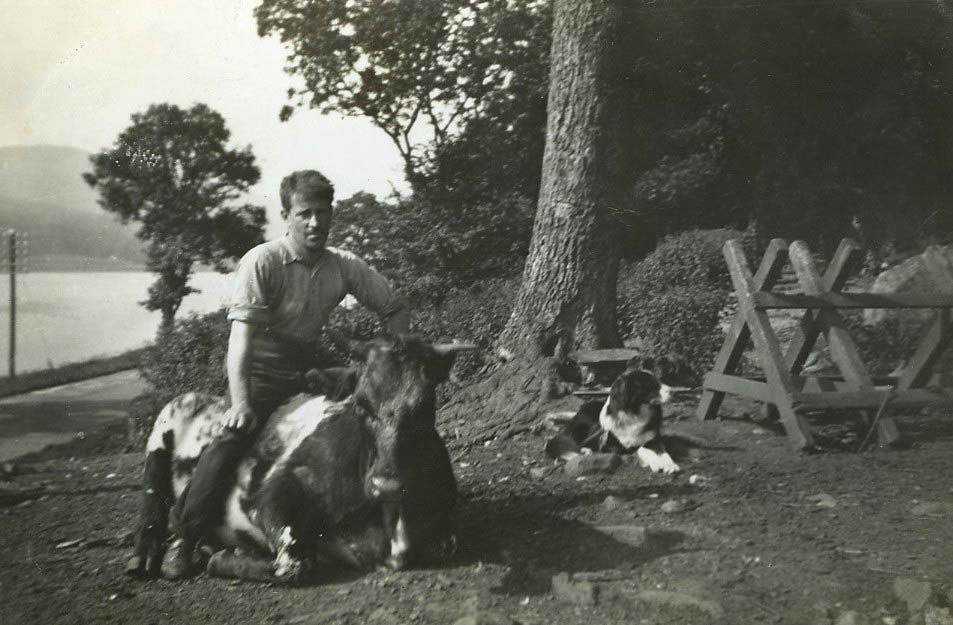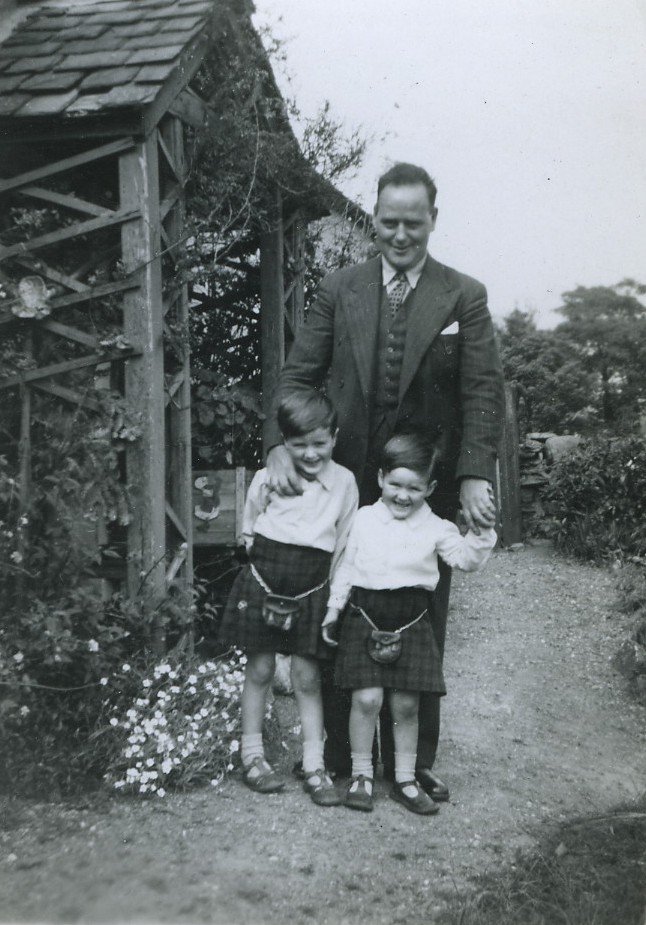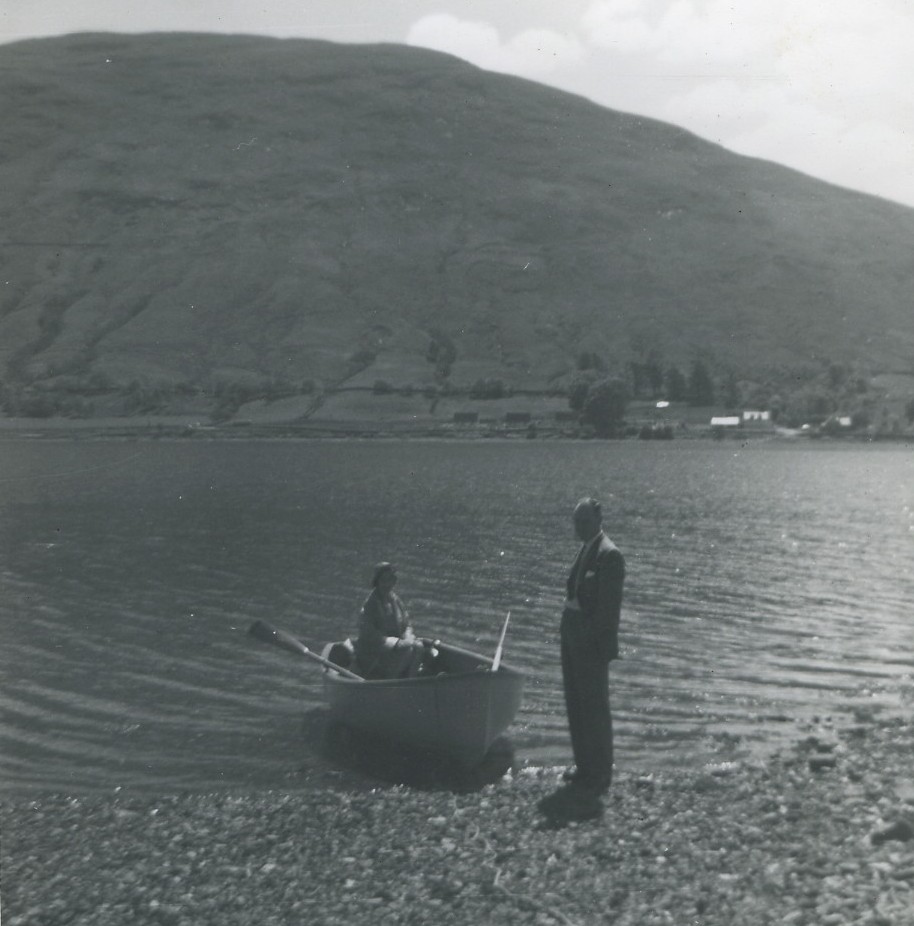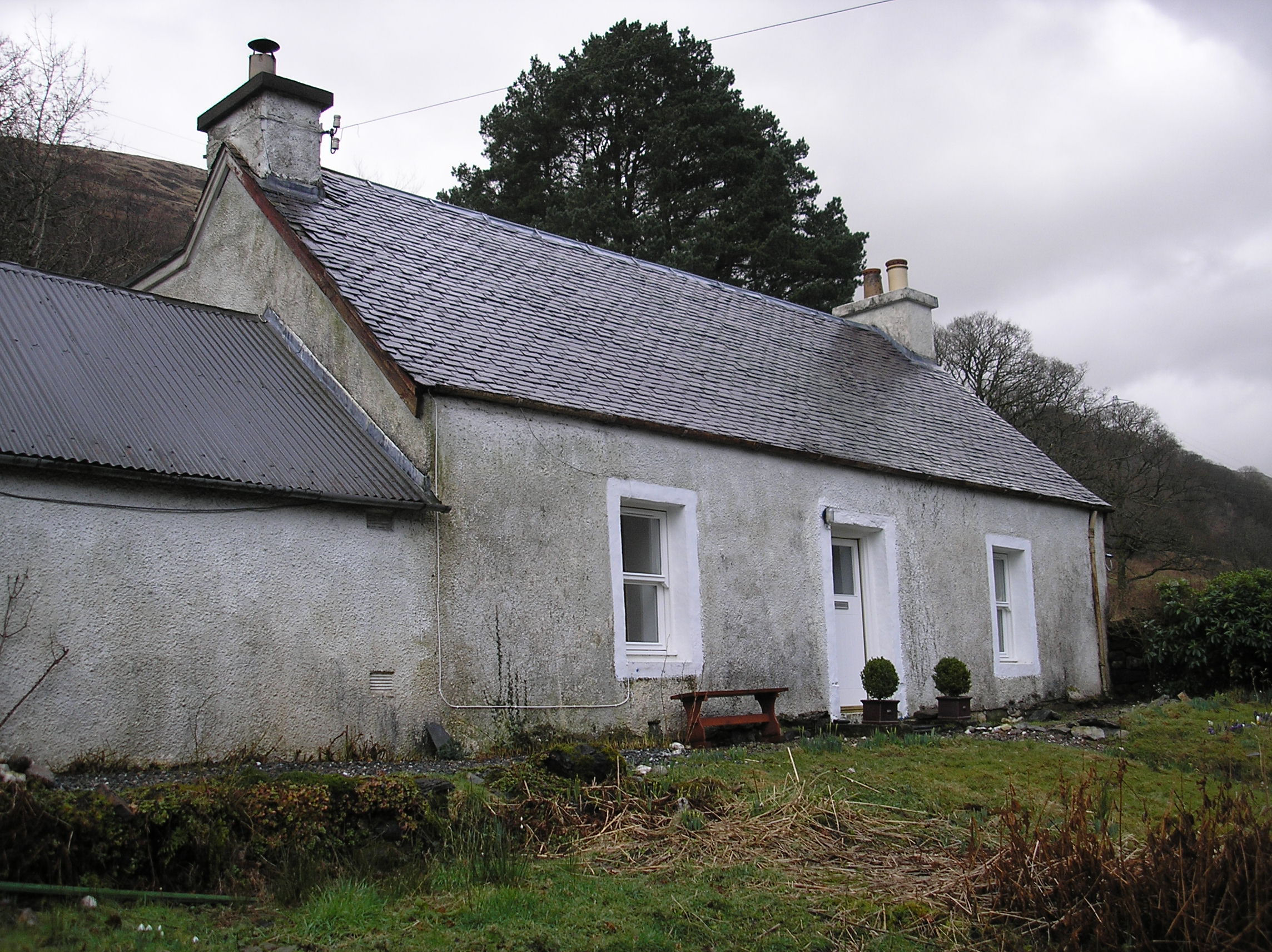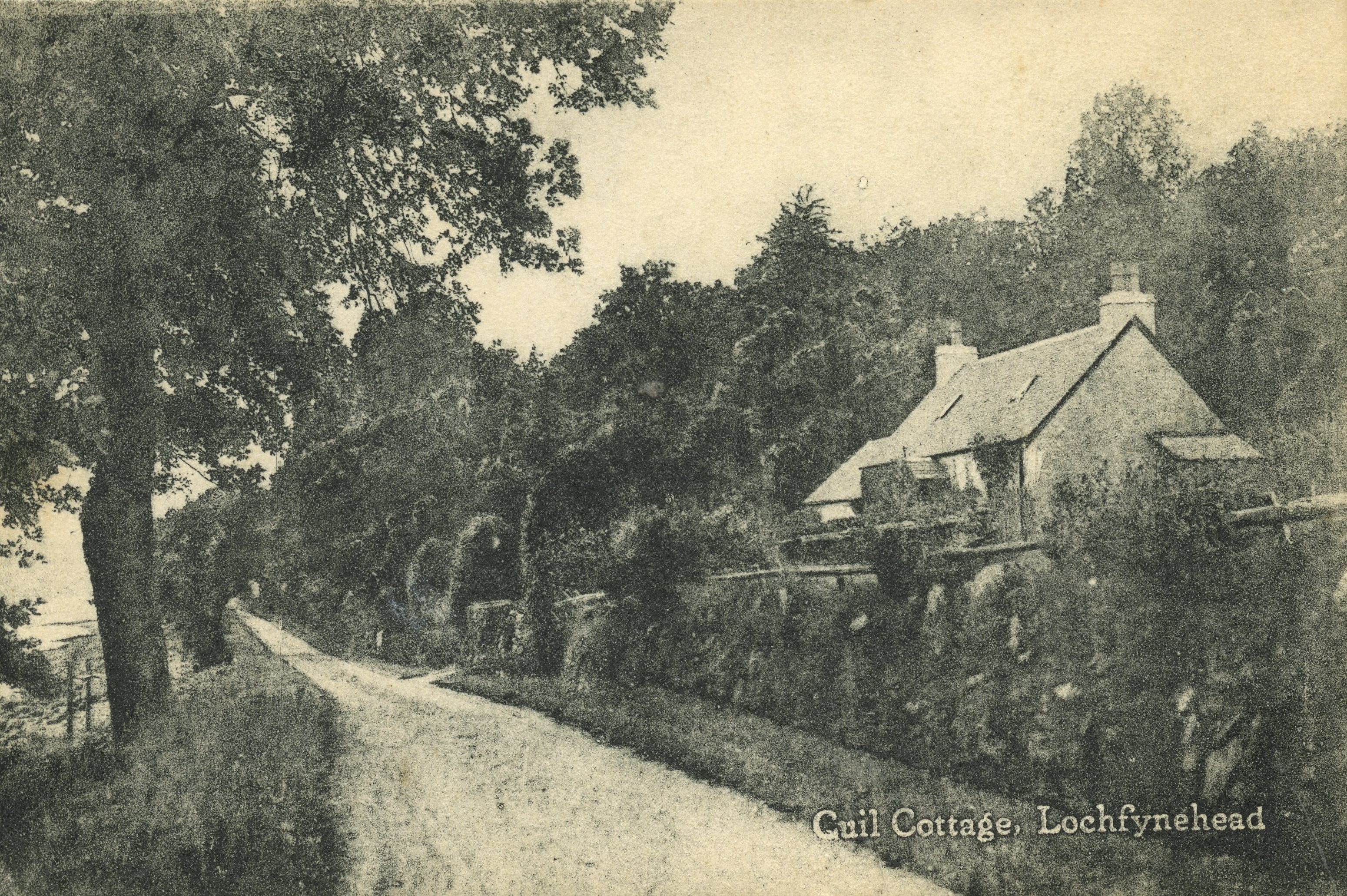Cuil Cottage | 33 occupants (1851 - 2008)
Cuil Cottage had a large oak and glass extension put onto the south end of the house in 20??
Cuil Cottage
i.Historical evidence and known architectural history
This building is already in place by the time of 1851 census and appears essentially as it is now on the 1st Edition OS.
Internally there is extensive re-lining, this was done in the late 1960s by Nigel Callander and Willie MacPherson; John MacDonald was also involved at this time (working for Ardkinglas Estate?). Builder work by Bolek Kobiela.
Charles Ferguson, the joiner from Strachur, put in the existing windows in the last five years.
Data from the Ordnance Survey Name Book (1871)
CUIL : OS Name Book 54 [RCAHMS archive: reel 42, counter 001]
Name of site (modes of spelling) Spelling confirmed by authorities Descriptive remarks, general observations of interest
CUIL BEAG G F H(?) Callander Esq. [Ardkinglas]
Donald Black, Cuil
A M Vicai (Mc Vicar?), Clachan Beag A commodious farm house and offices about a mile south of Clachan.
The property of G F H(?) Callander, Esq. [of Ardkinglas].
Ordnance Survey, 1871, Name Book for Sheets XCIX (99), CXI (111), CXII (112), CXIII (113), CXIV (114), CXV (115), CXXIV (124), CXXV (125) and CXXVI (126), Argyllshire, 6inch scale, (21/04/1897).
[?] - Information added, not part of original document ; (?) - Spelling unclear
ii. General
This is a three-bay cottage, rectangular in plan and with a small gabled out-shot to the W. Its plan is the same as depicted on the 1st Edition OS, the only subsequent addition being the existing porch (the rear re-entrant to the NW). The simplicity of this structure is very characteristic, its overall form and details suggesting a date in the early 19th century.
Its general layout, with the presence of the byre to the W, is very comparable to that of the Cuil Beag cottage a little further along the shore to the E.
iii. Exterior
The principal elevation is of three bays; the cottage is gabled to E and W, with a double-pitched slated roof and chimneys to E and W, original copes no longer remain. The principal S-facing elevation is a very characteristic early form - tripartite with central entrance and a single window on either side.
The entirety of the building is harled and much of the harl looks as if it might be in part early (though in part a cement replacement). There are raised margins around the window and entrance, and the slightest hint of raised margins at the two southern corners. From the lowering of the soil at the S wall foot it is clear that the general construction is of lime-bonded random rubble. The windows and doors are relatively recent replacements.
A continuous flat-roofed dormer was added in the 1960s along the entirety of the rear roof pitch of the main cottage.
West range (former byre, existing kitchen)
The range to the West is rubble-built under a double-pitched roof that is gabled to the West. There is a broad secondary window in the West gable. The roof structure is apparently the original still though this is now roofed with crinkly tin. The S frontage of this extension is in line with the frontage of the house generally. To the rear there is a set-back and in the re-entrant angle formed by this there is a relatively new flat-roofed porch, also harled.
iv. Interior
The majority of interior surfaces have been lined out with gyproc and relatively little of early origin is now apparent.
In spite of all of these later alterations, including the complete replacement of the stair, in terms of planning the interior broadly reflects the original arrangement, with an entrance hall, stair facing one upon entry, principal ground floor rooms to either side, a stair up, and then principal bedroom spaces on either side.
Downstairs most of the partitions in the central area are of gyproc upon light studwork. It is possible that the two principal that separate the entrance hall area from the rooms on either side, may retain earlier fabric; certainly the doors to E and W side are of 19th century date. The latter is of plank and batten construction with beads at the tongue and groove vertical jointing; a good latch of wrought iron. The door into the drawing room on the E side is of similar construction although in place of a latch there is a more formal box lock with brass handles, all coeval.
It seems the original kitchen was on the W side. The abutting byre structure (present kitchen) is now accessed immediately beyond through the present porch. When John MacDonald came to do his works in the later 1960's the byre was occupied by hens.
In the western main room the existing fireplace is a ceramic tile construction, in shades of beige - some debate as to whether this was put in the late 1960's or a little earlier, perhaps shortly post-war.
In the E room the apparently original fireplace in the gable wall still survives. This is built of refactory-type bricks of a cream/beige fabric, and has a low arched head. The existing hearth area is of ceramic tile matching that in the western room and of much more recent origin. This fireplace has been very recently refurbished with the existing wooden mantelshelf put in. The architectural input on this was by David Sumsion.
The existing kitchen in the range to the W was entirely refurbished and lined out in the 1960's works; the present kitchen window to the W was inserted at this stage. There is an existing back door into the main house at the rear re-entrant. This may be original and there seems to be some memory of there having been a porch at this position prior to the construction of the existing.
v. Notes on setting
There is a small area of enclosed walled ground facing the loch side at the front, retaining wall along the roadside. The E side of the enclosure runs in line with the E gable. To the rear there is evidence for a further section of walling running up the hill on the line of the gable behind the house. A small burn runs down the rear from NE to SW. Outside the building to the W there is a pile of cream 12? quarry tiles; these perhaps came from either one of the interiors (W ground floor room in the main cottage?).
The cottage was originally approached form the W by a gently sloping drive up from the roadside. Partly cutting into this now is the access leading to a secondary shed. The latter is of crinkly tin construction (and quite picturesque in its own right!). There is a retaining wall for the bank just-up slope from the shed on its W side; a septic tank is concealed within this banking.
The burn also runs down diagonally behind the house, running down to the west side, which is culminated under the entrance drive and there's a little sort of well like opening within the retaining wall on the roadside. There are remains of a stone dyke or similar type construction going out onto the loch shore, double check that with the earlier OS map.
The 1st edition OS indicates there had been a small building on the loch-side, beyond the main road (a boat-house?). This had been in line with the E gable wall of the cottage. No sign of it is now visible; the structure had likely been a casualty of subsequent road widening and building-out onto the shore side with rock-armour.

